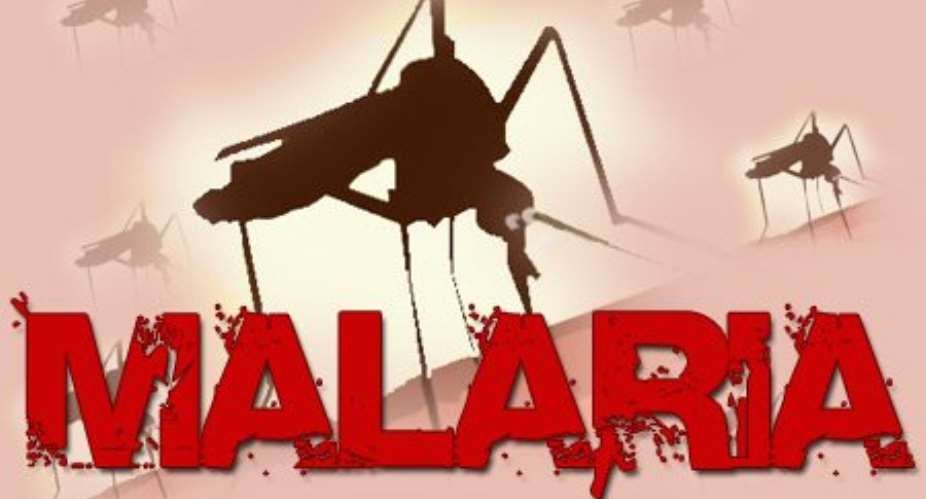Accra, July 27, GNA - The 2016 Ghana Malaria Indicator Survey (GMIS) report was on Thursday launched with the call on government and stakeholders to utilise it in the formation of policies and programmes associated with malaria.
The report which was collated by the Ghana Statistical Service and the National Malaria Control Programme (NMCP) would help in appreciating the progress or otherwise made in the fight against malaria in Ghana.
Mr Baah Wadieh, Acting Government Statistician, said the survey contains a number of indicators including, malaria prevention practices, and care seeking for fever for children under age five , prevalence of malaria among children five -59 months and prevalence of low haemoglobin among children 56-59 months
Other indicators of the survey are the use of treated and untreated mosquito nets, use drugs for malaria prevention during pregnancy among women 15-49, use of antimalarial drugs for treatment of fever among children 6-59 months, and malaria knowledge and messages.
He said the survey, the first of its kind, was also to inform policy makers and programme managers in evaluating and designing programmes and strategies to improve malaria control.
He said the GMIS data collection commenced in October 2016 and ended in December 2016, with 12 teams of interviewers and supervisors travelling throughout the country, visiting about 6,000 households, interviewing over 5,000 women and testing about 3,080 children for anaemia and malaria.
Mr Wadieh said according to the survey, the national malaria prevalence among children six to 59 months had decreased from 27 per cent to 21 per cent from 2014 GDHS to 2016 GMIS.
'The survey results also showed that malaria prevalence among children varies widely throughout the administrative regions of Ghana, ranging from five per cent in Greater Accra to as high as of 30 per cent in Central and 31 per cent in the Eastern Region.
'Rural children are also more than twice as likely to be infected with malaria as urban children.'
He said: 'It is our hope that we will all study this report very carefully and use the information to guide our planning and interventions programs associated with malaria in Ghana.
Dr Keziah Malm, Acting Programmes Manager, NMCP said malaria remains a public health concern in Ghana and occurred every year with varying transmission intensity throughout the year, and children under five and pregnant women are the most vulnerable.
She said much progress had been made over the years in managing the disease, saying records shows a demonstrate reduction in malaria mortality from 3,882 in the year 2010 to 1,264 in 2016, translating into 67 percent reduction.
Dr Malm said the overall goal of the NMCP is to reduce malaria morbidity and mortality by 75 percent by the year 2020, using 2012 as a baseline.
She said the enthusiasm and momentum exist for moving globally towards eliminating and possible eradication in some countries, but in
Ghana it is believed that such ambitious effort needs to be sustained for the duration of the control effort and require substantial research base.
She noted that the report among other things is expected to reveal possible areas for further research.
Mr Peter Takyi Peprah, Project Co-ordinator, 2016 GMIS said the nationwide survey was conducted in 93 urban and 107 rural clusters, comprising 30 households per cluster.
Women from 15 to 49 years and children from six to 59 months in 6000 households were selected.
He said the survey adopted two type of questionnaires, the household and women questionnaires, adding that biomarkers were also used.
He noted that 72 field staff, including 15 biomarker technicians were sent onto the field to collect data, adding that the response rate for both methodology was 99 percent representing an overwhelming majority.
'In total, 6,003 households were selected, but 5, 841 were interviewed. Out of the 5,186 eligible women, 5,150 were interviewed.'
He said other issues captured by the report include drinking water sources, sanitation, specifically toilet facilities literacy rate, health insurance coverage, malaria prevention strategies among others.
GNA
By Hafsa Obeng, GNA





 Akufo-Addo commissions Phase II of Kaleo solar power plant
Akufo-Addo commissions Phase II of Kaleo solar power plant
 NDC panics over Bawumia’s visit to Pope Francis
NDC panics over Bawumia’s visit to Pope Francis
 EC blasts Mahama over “false” claims on recruitment of Returning Officers
EC blasts Mahama over “false” claims on recruitment of Returning Officers
 Lands Minister gives ultimatum to Future Global Resources to revamp Prestea/Bogo...
Lands Minister gives ultimatum to Future Global Resources to revamp Prestea/Bogo...
 Wa Naa appeals to Akufo-Addo to audit state lands in Wa
Wa Naa appeals to Akufo-Addo to audit state lands in Wa
 Prof Opoku-Agyemang misunderstood Bawumia’s ‘driver mate’ analogy – Miracles Abo...
Prof Opoku-Agyemang misunderstood Bawumia’s ‘driver mate’ analogy – Miracles Abo...
 EU confident Ghana will not sign Anti-LGBTQI Bill
EU confident Ghana will not sign Anti-LGBTQI Bill
 Suspend implementation of Planting for Food and Jobs for 2024 - Stakeholders
Suspend implementation of Planting for Food and Jobs for 2024 - Stakeholders
 Tema West Municipal Assembly gets Ghana's First Female Aircraft Marshaller as ne...
Tema West Municipal Assembly gets Ghana's First Female Aircraft Marshaller as ne...
 Dumsor is affecting us double, release timetable – Disability Federation to ECG
Dumsor is affecting us double, release timetable – Disability Federation to ECG
